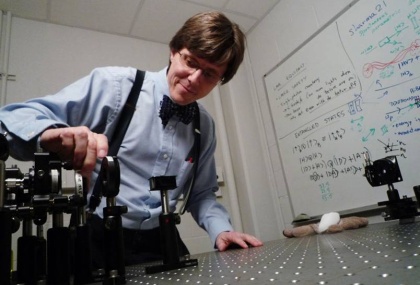Random Numbers

Anyone who has done any programming will realize the value of random numbers. Programmers will also realize that it is extremely difficult to generate a completely random number. Nearly all random number algorithms are pseudo-random, based on a seed value and would be repetitive given the same seed. Other techniques exist but are extremely slow. Researchers at the University of Illinois claim to have crafted a fast random number generator. In the words of professor Paul Kwiat
"Our quantum method provides fast, secure random number generation at very high speeds. Our method is 10-times faster than any other quantum random number generator reported so far."
Using laser optical pulses the random number generator utilizes the time between arrival of random photos to generate the numbers, ensuring true accuracy. Applications could include data encryption, numerical simulations, financial market modeling and others.